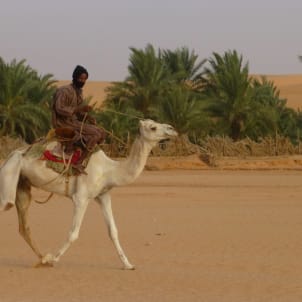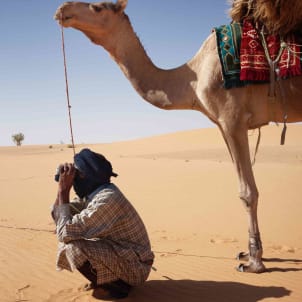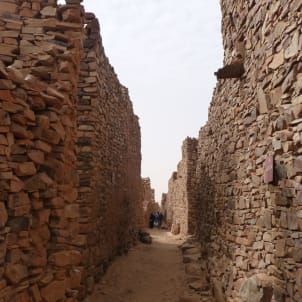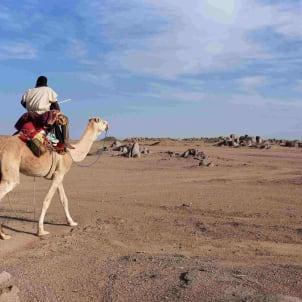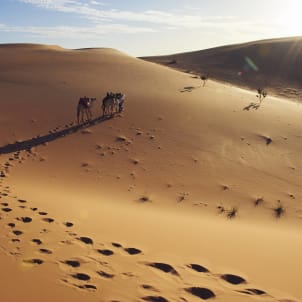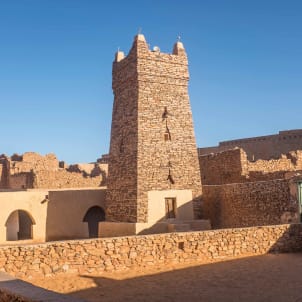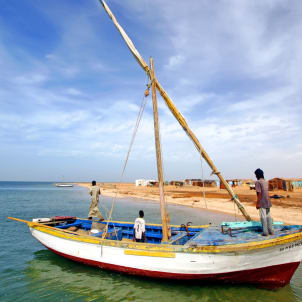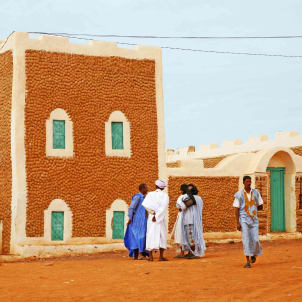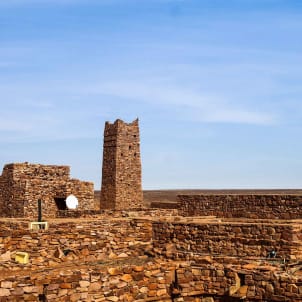Explore Mauritania, land of contrasts
4.9/5317 reviews
Experience adventure in Mauritania, between dunes and ocean.
A journey to Mauritania is an immersion in authenticity.
Must-see locations
Mauritania: Dive into a Desert of Wonders.
Land of passage and exchanges between North Africa and Sub-Saharan Africa, the "Islamic Republic of Mauritania" is largely composed of Saharan desert, with the dunes and oases of Adrar being its most striking symbol. But traveling in Mauritania also means discovering by 4x4 or trek 700 km of white sandy coast bathed by the Atlantic Ocean, numerous national parks, and countless nature reserves. One of the country's most beautiful wonders is the Banc d'Arguin, a UNESCO World Heritage site where multiple species of migratory birds, as well as a plethora of dolphins, turtles, and porpoises, come to frolic.
With a low population density due to its arid climate, Mauritania nonetheless harbors some urban gems like the ancient cities of Ouadane, Oualata, Chinguitti, and Tichitt. Traveling to Mauritania thus means embarking on an adventure in a small group, having taken care to get vaccinated against yellow fever and to be informed about security conditions in the eastern/northeastern half of the country.
At the Heart of the Mysteries of the African Desert
Follow the tracks of camels and dromedaries to make a stop in Mauritania. Like the mythical caravan convoys that once crossed the great sandy plains of the Western Sahara, connect the Arab empire to the rich kingdom of Mali.
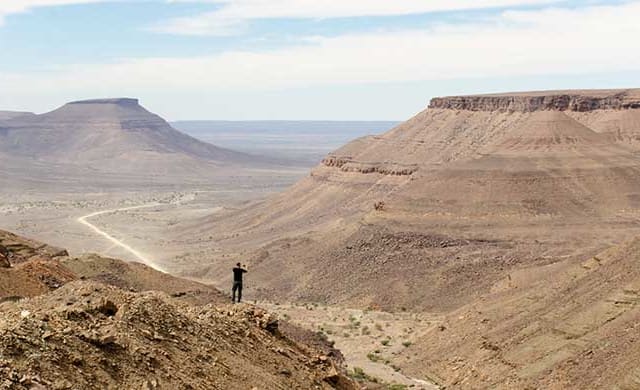
The Unmissable of Mauritania
Founded in the 11th century at the gates of the Sahara, the fortified city of Ouadane awaits you in an exceptional setting. A sumptuous geological and architectural site, listed as a UNESCO World Heritage Site since 1996. Home to around ten libraries, the holy city of Chinguetti has been sprawling for over a thousand years on the desert plateaus of the Adrar region. An essential stop before setting off to discover Atar and its unforgettable cave paintings.
The Mauritanian version of the Banc d'Arguin has nothing to envy its namesake in Arcachon. Nestled along the Atlantic coast, the national park reserve is one of the most significant in the world for migratory birds. A grandiose landscape of dunes and marshes. The ancient volcano of Guelb er Richat is incredible from the sky, but it remains magical at ground level. A gigantic geological structure with unique patterns, formed after a long erosion process.
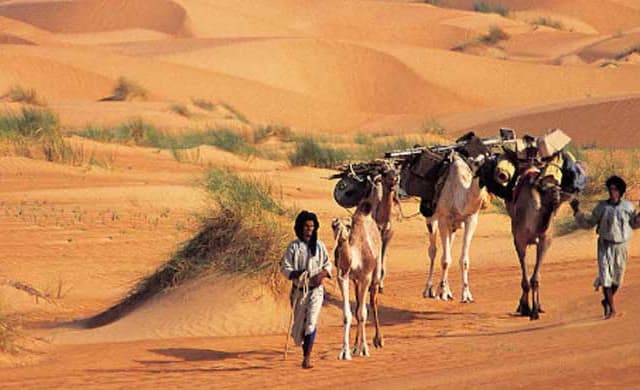
Exploration off the beaten path
On the Atlantic coast, Nouakchott, the City of Sands and the administrative capital of Mauritania, as well as Nouadhibou, the economic capital, are full of wonders to visit. Between unusual markets and ship graveyards, these places offer a fascinating glimpse into local life and maritime history.
Built on the edge of the Sahara, in the Tagant region, the city of Tichitt is one of Mauritania's historic cities. It houses a mosque visible from afar, symbolizing a rich African cultural heritage. However, this site is threatened by the relentless advance of the desert.
The oasis of Terjit, located in the heart of the Saharan desert, is a favored stop for nomads. It offers an enchanting setting for camping, with its invigorating mint tea and refreshing spring water. It is a true paradise, with its palm trees and natural pool, contrasting with the surrounding aridity.
A website by
Customize your trips with Quotatrip and receive tailor-made offers directly in your inbox.
Discover a country
